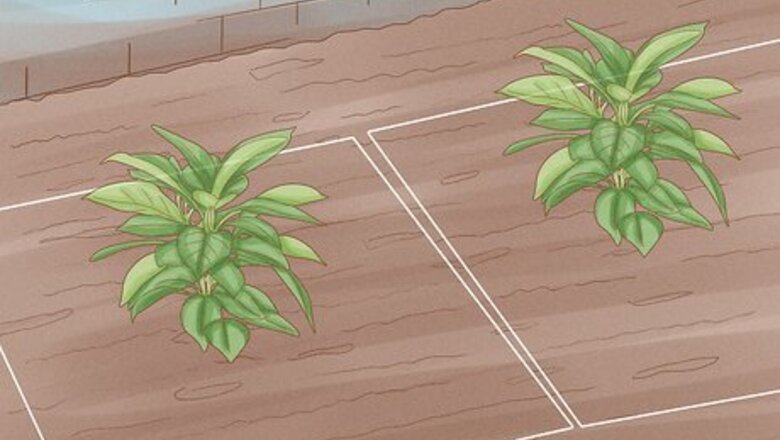
views
Choosing a Planting Location
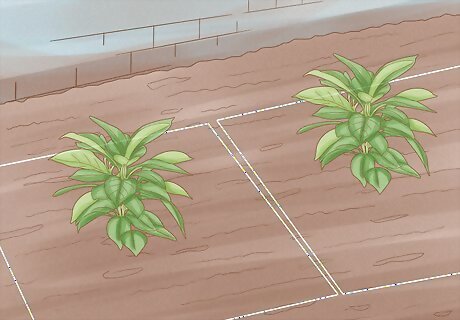
Find a spot where your plant will have enough space to grow. Each plant needs adequate space to extend its roots and leaves. Pick a growing spot based on what the plant will look like when it reaches full size. Leave space between other plants you have. Research your plant variety online to find information on its spacing needs. You may receive planting information when you buy the plant. For example, the spacing recommendation is often printed on the back of packets bulbs come in. If you grow a plant in a pot, the pot needs to be a little wider than the plant.
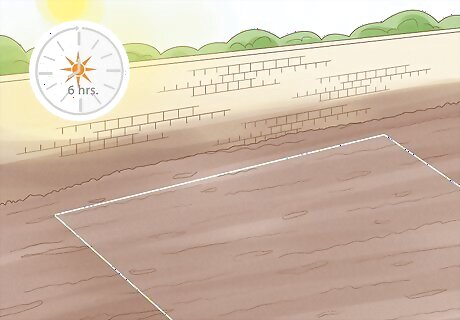
Choose a spot that provides proper sunlight. The amount of sunlight your plant needs depends on which variety you grow. Many plants, including lots of flowers, grasses, and trees, grow better in spots with 6 or more hours of sunlight a day. Watch your environment to see how the sunlight changes throughout the day. Search for information on your plant's sunlight requirements before planting. Some plants grow better in partial shade, which is 4 to 6 hours of sunlight. This includes garden plants such as begonias, lettuce, and carrots. A few plants survive in full shade, such as dead nettle, foxglove, yew, and English ivy.
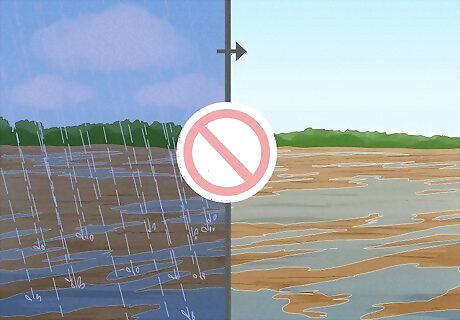
Pick outdoor growing spots that drain properly. Most plants, including lots of bulbs, grasses, and flowers, grow better in well-drained soil. Watch your yard after a rainy day. Any spots that have pools of water a few hours after the rain stops are generally poor planting spots. You can amend poor draining spots by mixing sand into the soil. Plants put in pots can be left outdoors, but may need extra watering. For example, annuals like marigold or coriander can dry out in warm climates.
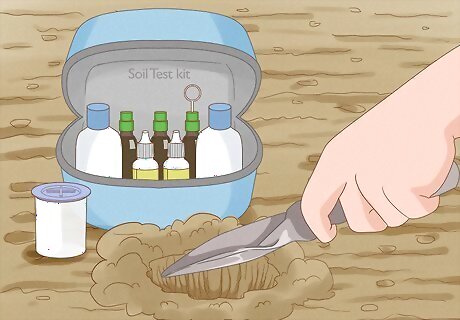
Test your soil's pH for outdoor planting. Many plants, including bulbs and grasses, do better in slightly acidic soil. You can purchase a testing kit from a home improvement store. Adjust your soil as needed to improve your planting location. This doesn't need to be done for potted plants, since you will use potting soil. Mix limestone into the soil in order to raise the pH. Add sulfur or aluminum sulphate to lower the pH. If the soil pH is bad in a particular area, you may be able to find better soil elsewhere in your yard.
Planting in a Pot
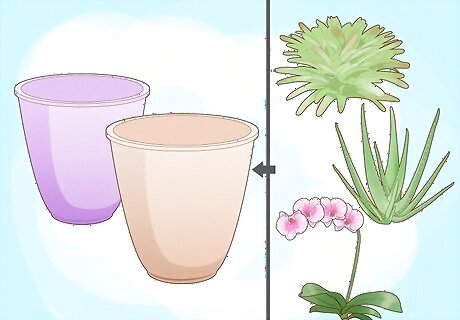
Pick plastic if you want a light pot that dries out slowly. Pots made of plastic, resin, or fiberglass are inexpensive and resistant to damage. They also retain moisture better than clay pots. Plants in these pots do not have to be watered as frequently. Overwatering your plant is easier with these pots. If you are unsure about how much water to use, choose clay pots. Plastic is a good choice for moisture-loving plants such as orchids, philodendrons, bromeliads, and aloe vera.

Plant in a clay pot for better air circulation. The main advantage of a clay pot is that more air gets into the soil, leading to a healthier plant. However, this means that water drains more quickly. Clay pots are heavier than plastic pots, but they have a natural aesthetic and look decorative outdoors. Ceramic pots are similar to clay and terracotta pots, except they resist water a little better. Clay pots are a good choice for plants that grow in dry soil, such as evergreens and succulents like cacti.

Choose a container with drainage holes in the bottom. Any pot you use needs to have a series of holes in the bottom in order to let out excess water. Set the pot on a plant saucer, a broken pot shard, or another tray that will collect the drained water. If you use a pot without holes, place a layer of pebbles at the bottom. This will lift the plant's roots out of the water. Excess water in the pot leads to root rot, which destroys the plant.
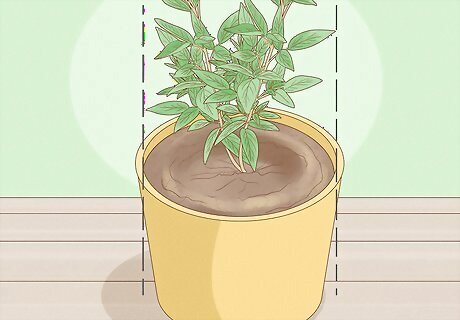
Use a pot that is the same size as the plant. Choosing the wrong size of pot can be harmful to your plant. The ideal pot is as wide as the plant. Get a pot 2 to 4 in (5.1 to 10.2 cm) wider if you know the plant will grow quickly. Plants cannot spread their roots in small pots. In large pots, water collects and rots plants. Once your plant looks too big for the pot, you will need to transfer it to a pot the next size up.
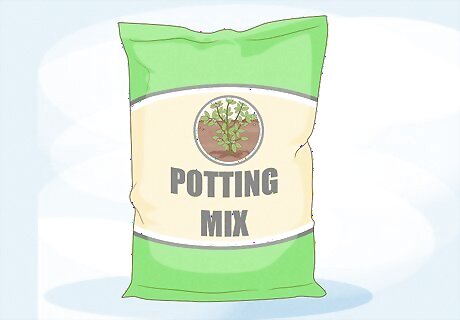
Purchase an organic potting soil mix. Potted plants, even if they are left outside, require soil designed for use in pots. You can get potting mixes at a gardening center. Look for soil mixes made with a combination of peat moss, vermiculite, and organic matter. Cacti and succulents require a special cacti and succulent potting mix that drains faster. This will be labeled on the bag of soil. Avoid using dirt from your yard or garden. It isn't suitable for use in pots.

Fill the pot with soil so the plant's base is near the rim. The amount of soil you need to add depends on the size of your plant. Add enough soil so the plant's base is about 1 in (2.5 cm) below the pot's rim. The base is where the roots meet the stem. The root ball needs to be centered in the pot. Leave a hole in the middle of the soil for it. Dampening the soil a little can help you mix it into the pot. Read the manufacturer's instructions to find out how much water to add.
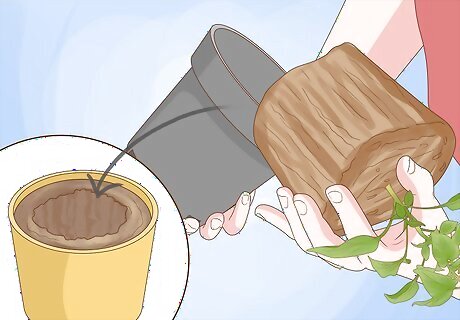
Move the plant into the pot. If your plant is in a container, remove it first. Hold onto the stem with 1 hand, then tip the plant over. Use your other hand to support the root ball as you lift the plant. Then. place the plant in the new pot and cover the roots. Avoid tugging on the plant's stem, since this can damage it. If the plant is stuck in the dirt, gently work around the edge of the soil with a spade or trowel. Be careful to avoid breaking the root ball.
Planting in Outdoor Soil

Plant your plant in the spring or fall. During these times, the weather is gentler, giving your plants a chance to acclimate to the soil. Most plants can be put in the ground in the spring, although some may grow better when planted in the fall. Research your plant online to find the best planting time for it. Retail stores sell plants during the appropriate planting season. Plants you buy should be planted as soon as possible to ensure their survival.

Remove the plant from its pot or netting. Always take your plant out of its container before putting it into the ground. Containers prevent plant roots from spreading through the soil, and your plant will be unable to acclimate and collect nutrients. Flowers come in pots or plastic containers. Grip the plant's stem with 1 hand, tip the plant over, and brace the root ball with your other hand as you lift the plant. Some trees have netting around the root ball. Cut the netting string with scissors. You can then unwrap the netting off the roots.

Inspect and prune damaged roots. Before planting, look for any roots that look unusually thick and woody. Roots that are already partially cut should be removed, as well as any roots that wrap around the plant. These roots can cause a variety of problems that ruin the plant. Use a sharp knife, a pair of gardening shears, or a shovel. Sever the root as close to the plant as possible. Try to break up the root ball as little as possible. You can remove some of the dirt from the bottom of flowers and container-grown trees to locate their roots. For flowers and container-grown trees, you can gently reposition the roots so they point outwards. This isn't necessary for trees with root balls covered in netting.
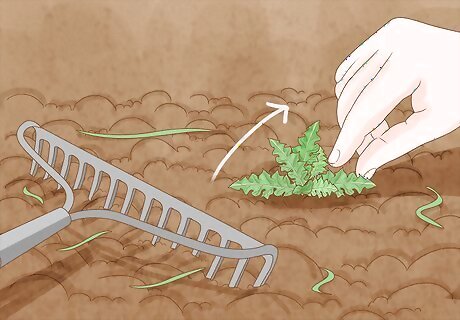
Make a garden bed for flowers and bushes. Most flowers, bushes, and grasses need a space cleared of any other plants. You can do this by digging up or tilling any grass and weeds. Spread a gardening soil over the area to prepare it.
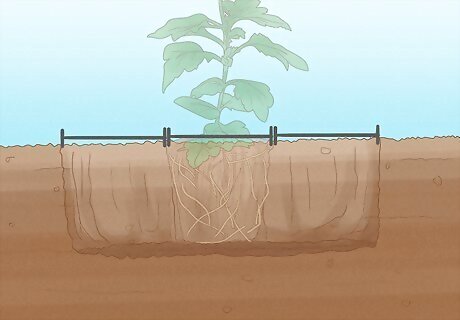
Dig a hole 2 to 3 times wider than the plant's root ball. If the plant came in a container, you can use that as a comparison. Measuring the space with measuring tape can help as well. A properly widened hole gives the plant plenty of space to grow. This is important for flowers as well as bushes and trees. Consider how far the plant will extend after it grows. A wide hole can help you put enough space between this plant and others. For grass seeds, till the entire growing space. The seeds need to be scattered as close together as possible so the grass looks full.
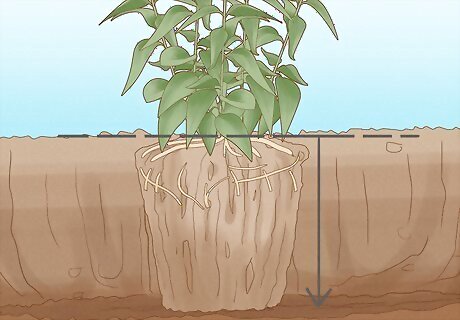
Deepen the hole so the plant's root crown is at the soil line. The depth the hole needs to be depends on the size of your plant. Dig the hole as deep as the root ball. Many plants, such as annuals, perennials, and bulbs, need a hole about 8 in (20 cm). The hole will need to be deeper for partially-grown trees. Research your plant online to find the proper growing conditions it needs. Some plants, such as tomatoes and potatoes, need to be planted deeper. The soil may come up as far as the lowest leaves on the plants.
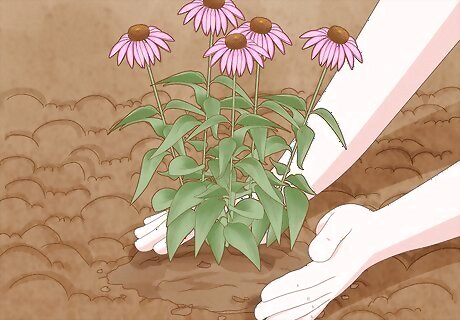
Place the plant in the hole and fill it with soil. Set the plant in the middle of the hole, positioning it so the stem is straight vertically. Push the dug-out soil back into the hole. Rake the soil level, making sure it covers the plant's roots. Then, compact the soil by gently pressing down on it with a spade, shovel, or another tool. Avoid stepping on the soil, since this can damage the plant's roots. If you need more soil, purchase an organic topsoil from a gardening center.

Water the soil until it is moist. Thoroughly watering the soil removes any leftover air pockets. Add enough water so the moisture reaches about 6 to 8 in (15 to 20 cm) deep. This should be enough to help most plants acclimate without causing waterlogged soil. You may need to add more water to moisten the soil around large trees and bushes. Test the soil by rolling it between your fingers. Moist soil clumps into a ball that doesn't break when you drop it.
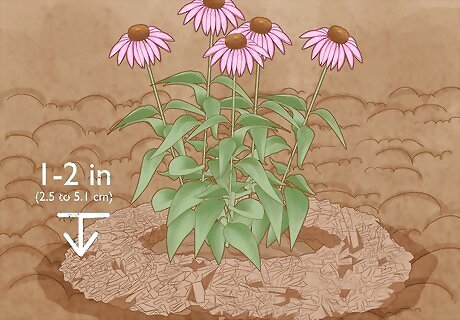
Spread an organic mulch around the plant. Purchase a mulch such as pine bark. Make the layer of mulch about 1 to 2 in (2.5 to 5.1 cm) deep. Spread the layer as far as the plant's leaves or branches reach, then rake it flat. Mulch insulates the plant, helps with water retention, and blocks out harmful weeds.
Watering and Fertilizing Plants

Store plants with exposed roots in a water-filled bucket. You may get trees and bushes with exposed roots when you order from a catalogue. The roots need to be kept moist so the plant stays healthy. Position the plant so only the roots are submerged in the water. You may also keep the plant in a bucket or plastic bag packed with moist straw or newspaper. Plant the plant as soon as possible to ensure its survival.

Water the plant an hour before transplanting it. Leave the plant in its original container until you are ready to plant it. Then, add water until the soil is moist. This helps protect the plant, since the transplantation process can be hard on it. Moistened soil is also easier to dig up once you need to take the plant out of the container.
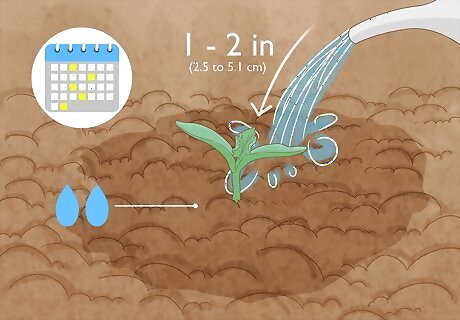
Add water once a week to keep the soil moist. Most plants will need about 1 to 2 in (2.5 to 5.1 cm) of water a week. Some plants may need more or less water. Check the soil by touching it to see if it is dry. Pour water as needed throughout the week. Flowers, grasses, and small bushes can be watered with a hose, watering can, or irrigation system. Potted plants need water more often than regular plants, so check them frequently. Add water until it flows out the drainage holes in the pot. The weather also plays a part. You may need to water plants more frequently in the summer.

Use a dripping hose to water trees and large bushes. For these plants, the water needs to penetrate further into the soil to reach the roots. Set a garden hose near the plant and let the water drip for about an hour. Continue to water the plant weekly, testing the soil for moistness by touching it with your finger.
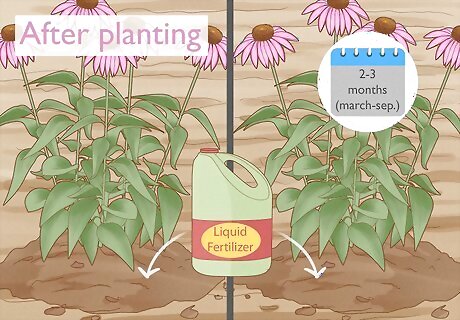
Pour a liquid fertilizer over flowers. You can purchase bottles of liquid fertilizer at gardening centers. Add the fertilizer directly to the soil according to the instructions on the bottle. Begin supplying fertilizer about a week after planting. Give indoor plants another dose of fertilizer every 2 or 3 weeks after the initial dose. Flowers in the ground can be fertilized every 2 to 3 months from March until September.
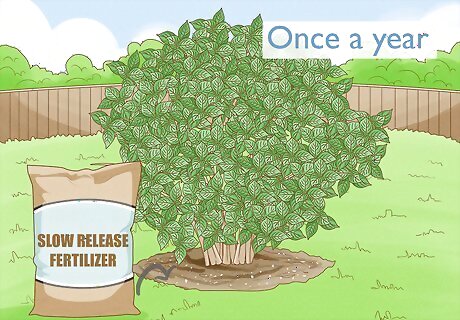
Use a slow-release fertilizer on larger plants. Purchase a slow-release fertilizer, then spread it out around your tree or bush. Make sure it doesn't touch the plant's stem. Water the fertilizer to settle in around the plant. This fertilizer only needs to be applied once a year. You can mix a little bit of fertilizer into the soil when you put any type of plant into the ground, including flowers, annuals, and perennials. Large bushes and trees generally do not need fertilizer in the first year. You can wait to apply it in the first spring after planting.


















Comments
0 comment